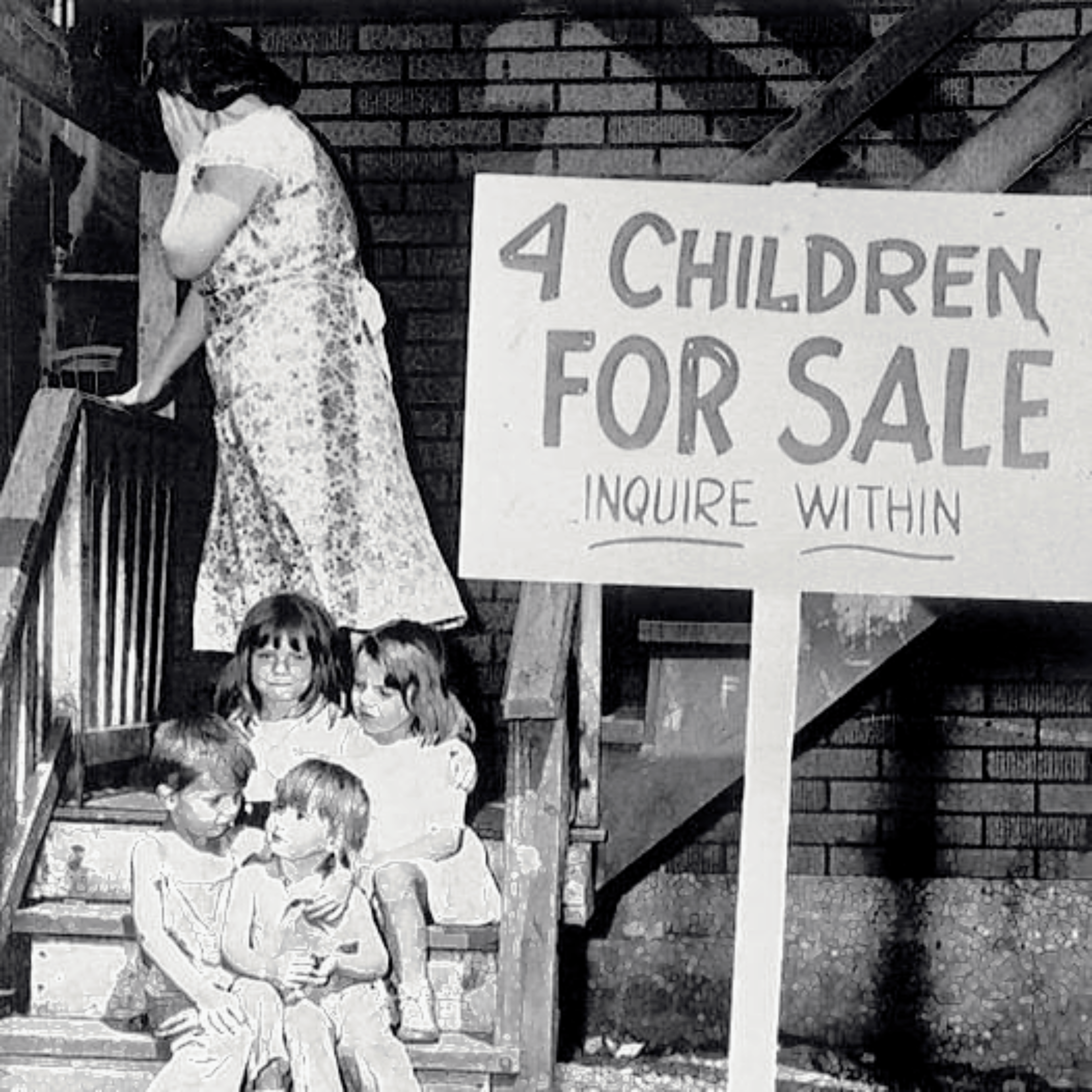In the late 1940s, a deeply moving image depicting four children up for sale appeared in newspapers nationwide.
Lucille Chalifoux and her husband, Ray, were struggling with unemployment and the threat of eviction, seemingly leaving them with no other option. However, the reality might have been different from what the public perceived. Eventually, the children had the chance to share their own stories.
Children for Sale
On August 5, 1948, an advertisement was published in the Vidette-Messenger in Valparaiso, Indiana, featuring a distressed mother with her back turned, her head in her hands. Her four young children sat on the steps behind her, next to a sign that read: “4 children for sale. Inquire within.” This ad soon appeared in newspapers across the U.S., from New York and Pennsylvania to Ohio, Michigan, Wisconsin, Iowa, Texas, and several other states.
The children were Lana, aged 6, Rae, aged 5, four-year-old Milton, and two-year-old Sue Ellen. Lucille was pregnant with her fifth child, who would also be given away. Many of the children had little memory of their birth mother or the photo being taken. Some would meet Lucille later in life and discover that her decision might not have been out of necessity. Each child has a unique and compelling, albeit tumultuous, story to share, except for Lana, who died of cancer in 1998.
Although they never reconnected with Lana, Rae, and Milton were able to spend time together throughout their lives. There is no clear evidence of the children being bought or adopted, but Rae and Milton were taken in by John and Ruth Zoeteman in DeMotte, Indiana. According to Rae, Lucille sold her for $2 to have bingo money because the man she was involved with didn’t want her children.
Rae and Milton’s names were changed to Beverly and Kenneth. They lived together for some years before Rae was sent to Michigan to a home for unwed mothers after being raped and becoming pregnant. Her daughter was taken and adopted out. The home they were raised in was “loveless” and “abusive,” with Rae recalling being chained and forced to work in the fields. At 21, she briefly reunited with Lucille but felt “no love.”
Years later, Rae’s son, Lance Gray, helped her reconnect with her siblings via social media. “They don’t make ’em like her no more,” he said of his mother. The photo showing the children for sale was sent to her by Milton. “My brother in Tucson somehow sent it to my e-mail,” she said. “I got on there and said, ‘Good God. That’s me.’”
Milton ended up in Tucson after a difficult journey. “There’s a lot of things in my childhood I can’t remember,” he said. His first day with his adoptive parents, he was beaten, tied up, and told he would be a slave. “I said I’d go along with that,” he shared. Milton endured mistreatment, being locked in a barn and given only peanut butter and milk. He was told to “keep him in line” and make him fearful. Eventually, he went to live with an aunt and uncle, attended high school, and helped with an egg delivery business.
Milton was later placed in the care of his friend’s family and discovered that his adoptive parents were actually foster parents. “I thought I had been adopted,” he said. He ended up in a mental hospital, was diagnosed with schizophrenia, and moved to Chicago before settling in Tucson. “My in-laws gave us $500, and we moved to Arizona,” he said.
Milton also met his birth mother long after she put her children for sale. In 1970, he stayed with her for a month but was thrown out after a fight with her husband. “My birth mother, she never did love me,” he said. “She didn’t apologize for selling me. She hated me so much that she didn’t care.”
Sue Ellen believed she had been adopted “legitimately” by a couple named Johnson. She died from lung disease in 2013 but not before reuniting with Rae. “It’s fabulous. I love her,” Sue Ellen wrote of her sister. Conversely, she wrote, “She needs to be in hell burning,” about her biological mom.
Their youngest brother, David, born Bedford Chalifoux, was not one of the children for sale. He was taken from his mother and placed with the McDaniels, who couldn’t have children. “I had bed bug bites all over my body,” he said, describing his poor living conditions. His adoption records state that his biological father had left and didn’t return home due to a criminal record. David grew up near Rae and Milton and occasionally visited them, witnessing their abuse. David met his birth mother and noted she had remarried and kept her subsequent children. “As soon as my mom seen me, she said, ‘You look just like your father,’” he recalled. “She never apologized. Back then, it was survival. Who are we to judge?”
“We’re all human beings. We all make mistakes. She could’ve been thinking about the children. Didn’t want them to die,” he concluded.
The image of the children for sale is profoundly disturbing because it was believed to be due to economic hardship. While that may still hold some truth, the siblings’ stories reveal that their mother had ulterior motives, challenging the perception of loving motherhood.




